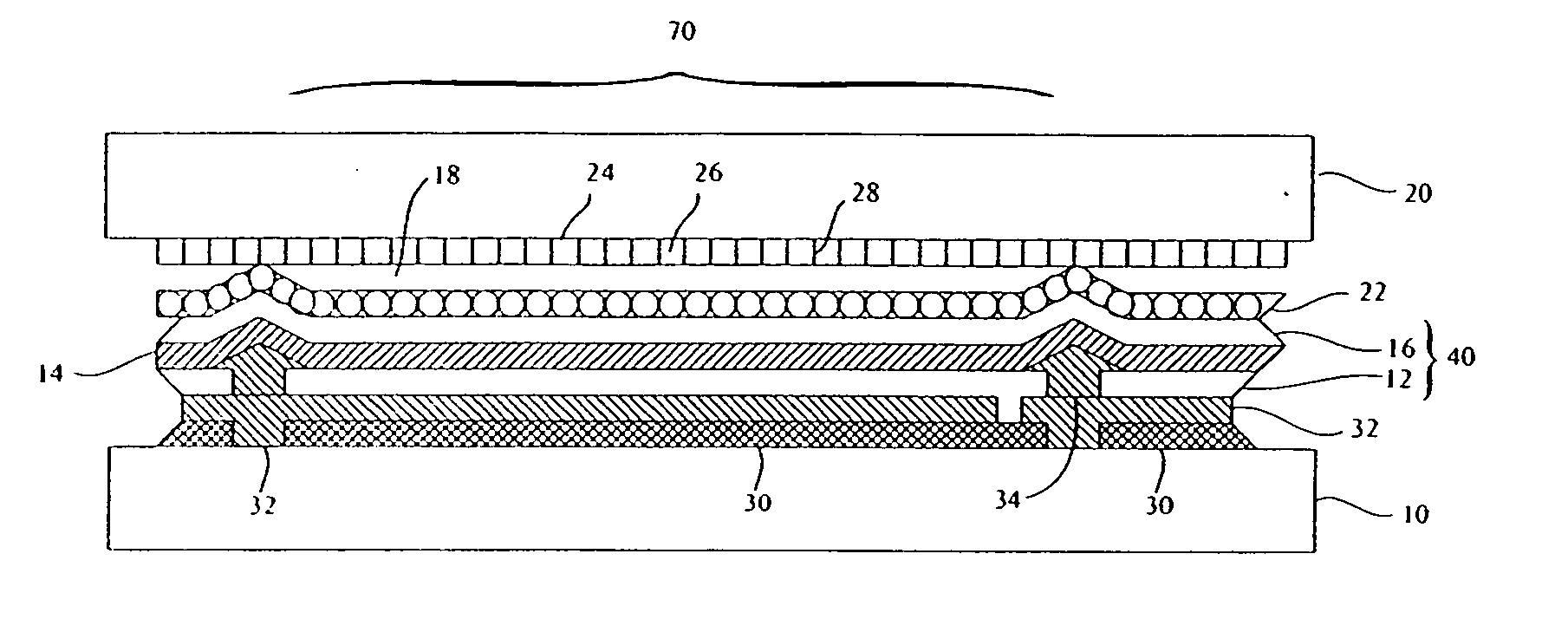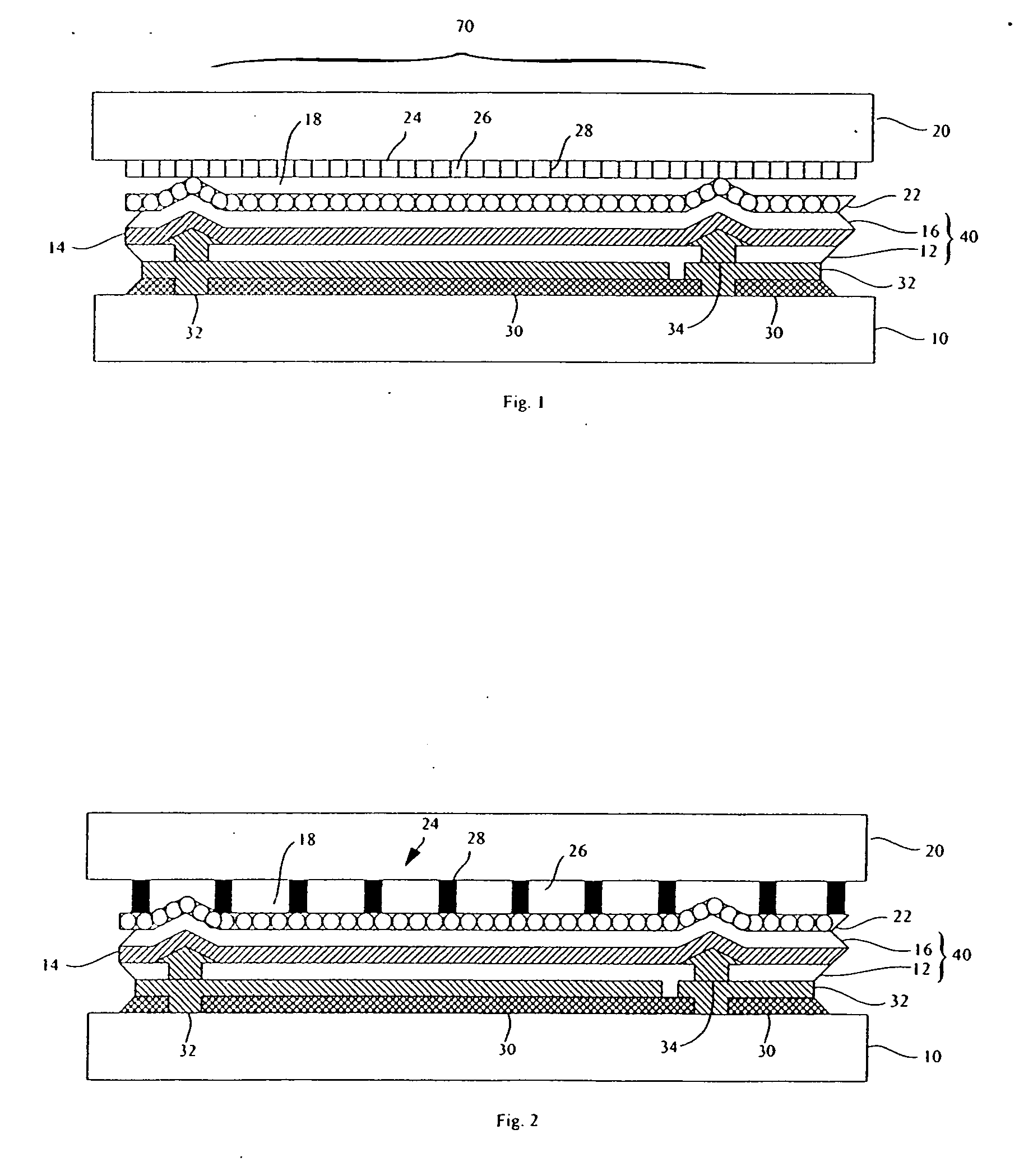OLED device having improved output and contrast
a light-emitting diode and output technology, applied in the direction of discharge tube luminescnet screens, discharge tube/lamp details, electric discharge lamps, etc., can solve the problems of reducing the image quality ole devices generally suffer from poor ambient contrast, and ole devices absorb as much as 40% of the emitted light, so as to improve the light efficiency and ambient contrast of the oled device
- Summary
- Abstract
- Description
- Claims
- Application Information
AI Technical Summary
Benefits of technology
Problems solved by technology
Method used
Image
Examples
Embodiment Construction
[0036] Referring to FIG. 1, in accordance with one embodiment of the present invention, an organic light-emitting diode (OLED) device, comprises an OLED 40 formed over a substrate 10 having a first patterned electrode 12 defining independently controllable light-emitting areas 70, and a transparent second electrode 16 formed over the first electrode, wherein one or more layers 14 of light-emitting organic material are formed between the electrodes 12 and 16, the organic material layer(s) 14 having a first optical index. A transparent cover 20 is formed over the OLED 40 and has a second optical index, and light is emitted through the transparent cover 20. A light-scattering layer 22 is formed between the cover 20 and substrate 10 for scattering light. A low-index element 18 having an optical index lower than the first and second optical indices is formed between the scattering layer 22 and the transparent cover 20. A contrast-enhancement layer 24 comprising a plurality of alternating...
PUM
 Login to View More
Login to View More Abstract
Description
Claims
Application Information
 Login to View More
Login to View More - R&D
- Intellectual Property
- Life Sciences
- Materials
- Tech Scout
- Unparalleled Data Quality
- Higher Quality Content
- 60% Fewer Hallucinations
Browse by: Latest US Patents, China's latest patents, Technical Efficacy Thesaurus, Application Domain, Technology Topic, Popular Technical Reports.
© 2025 PatSnap. All rights reserved.Legal|Privacy policy|Modern Slavery Act Transparency Statement|Sitemap|About US| Contact US: help@patsnap.com



